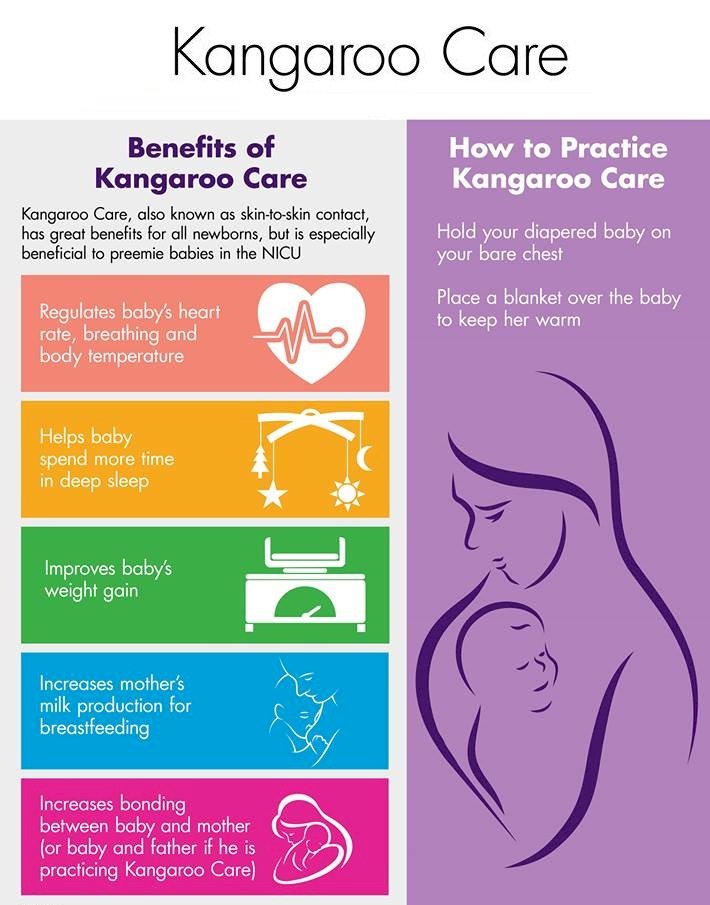Kangaroo care & Bonding Benefits of Skin-to-Skin Kangaroo Care
kangaroo care is a method of Skin-to-skin contact with mother or father —has dramatic positive effects on premature and full-term babies.

Kangaroo care is a technique of holding a low-weight or premature baby that involves skin-to-skin contact with the mother or father.
What is kangaroo care?
Kangaroo care is a procedure of holding a baby that involves skin-to-skin contact with the mother or father. The new-born baby, who is naked except for a diaper and a piece of cloth covering his back, is placed in an upright position against a parent's bare chest for skin-to-skin contact. This snuggling of the newborn baby inside the pouch of their parent's top, much like a kangaroo's pouch, termed this whole process as "kangaroo care."

Benefits of Skin-to-Skin Kangaroo Care
Kangaroo care caters both the physiological and psychological benefits, both to newborn baby and parents. Gebauer-Steinick explained that the technique of kangaroo care can be performed at any time of day. She advocates this method for every day, for a minimum of one hour, but rising the time of kangaroo care is also better.
How to do it: kangaroo care
- Always wear a front-opening top.
- Before picking up your baby, wash your hands properly.
- Keep your baby naked just in a diaper.
- Keep your newborn baby on your chest – especially for women, between the breasts.
- Then, wrap your top or any cloth around the baby to keep him warm.
- Lean back, relax and enjoy the closeness of skin-to-skin with your newborn baby.
The parents can also perform the procedure of Kangaroo care even with a baby, who is attached to tubes and wires, but the parents have to take extra care and they need to stay near the machines and try not to move around too much.
Benefits to Infants
- Physiologic stability (heart rate, temperature and blood pressure regulation, and respiratory stability)
- Improve the functioning of the immune system
- Weight gain
- Better, deep sleep
- Greater bonding with decline in stress and crying
Benefits to Parents
- Attachment and bonding
- Sensitivity and responsiveness to newborn baby
- Confidence in giving care and transitioning to home
- Breast milk production, greater success in breastfeeding and diminished danger of post-pregnancy anxiety
How Long to Kangaroo Care and Skin-to-Skin
Gebauer-Steinick urges new parents to continue the process of skin-to-skin as long as both parents and infants benefit from the Kangaroo Care method.
When kangaroo care might not be suitable
- Kangaroo care isn't appropriate for newborn babies who are still extremely untimely, or whose health is unsteady. For others, it might only be advisable for brief periods, or once every few days.
- It moreover depends on which hospital you are in. Some baby units might be disinclined to perform kangaroo care technique if they are not familiar with this way of working or do not have the resources to complete it securely.
- Timing is significant. Units whose medical staffs have experience of kangaroo care procedure are often happy for parents to perform it for around 28–30 weeks.






































Comments (0)